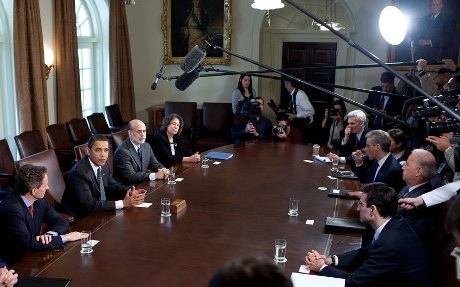Reader Poll
After Federal Reserve chairman Ben Bernanke announced a third round of quantitative easing—and a more forceful posture for the Fed with regard to the recovery—ARCHITECT set up a poll to ask readers whether they thought the Fed’s actions would make a difference. The results from this poll (a highly unscientific poll of self-selected readers), which was posted on Sept. 13, show that ARCHITECT readers are by and large bearish on the Fed’s ability to speed the economic recovery for architects, builders, and engineers. See the poll results below before the page break.
“Housing is the business cycle,” goes economist Ed Leamer’s memorable phrase. A slight exaggeration, but construction and real estate are usually among the first sectors to fall on hard times when a recession looms, and they lead the way up when better times arrive. That leading role is mostly due to real estate’s high sensitivity to changes in interest rates. Interest rate moves are the way that the Federal Reserve adjusts interest rates to rein in an economy that is speeding toward inflation or perks up one that is creating jobs too slowly.
But the construction and real estate flywheel has failed to spur economic momentum in this recovery for two reasons: First, the collapse of the housing market and the resulting financial crisis caused mortgage markets to seize up, and they have only slowly resumed the process of driving credit to builders. And second, the Fed’s favored interest rate tool was unable to do more to drive recovery after it fell to near-zero in late 2008. Fed chairman Ben Bernanke would have loved to keep cutting rates, but there was no way to do so. Since then, the Fed’s monetary policy-making committee has been wrestling with how to deal with those constraints. That long internal debate may now be resolved.
The old paradigm, now seemingly on its way out, was a doctrine of deflation-prevention. Bernanke has taken a great deal of criticism since the end of the recession, in June of 2009, for what is sometimes called “ultra-easy monetary policy.” In fact, his guiding principle has been relatively conservative: prevent the economy from falling into deflation, that is, suffering from falling price levels—as it did during the Depression.
To fight the scourge of deflation without assistance from further interest rate cuts, the Fed has had to resort to unusual policy steps. Purchases of long-term government bonds (sometimes called quantitative easing, or QE, because it involves the purchase of a set quantity of assets), aimed to bring down interest rates on public and private debt, is one. Tweaks to the language that the Fed uses in its statements, in hopes of convincing the public—architects included—that interest rates will remain low for a very long time is another.
